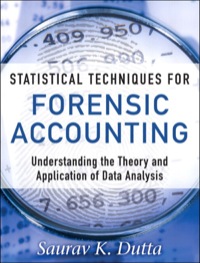Answered step by step
Verified Expert Solution
Question
1 Approved Answer
please help! 00 8 2 of 7 Required information (The following information applies to the questions displayed below) On January 1, Year 1, the general
please help! 







00 8 2 of 7 Required information (The following information applies to the questions displayed below) On January 1, Year 1, the general ledger of a company includes the following account balances: Accounts Debit Credit Cash $ 27,700 Accounts Receivable 15,588 Allowance for Uncollectible Accounts $ 1,650 Supplies 4,400 Notes Receivable (64, due in 2 years) 23,000 Land 80.800 Accounts Payable 12,450 Common Stock 103,000 Retained Earnings 34,300 Totals 5151,400 $151,400 During January Year 1, the following transactions occur January 2 Provide services to customers for cash, 554,100. January 6 Provide services to customers on account, $91,400. January 15 Write off accounts receivable as uncollectible, $4,300. January 20 Pay cash for salaries, $33,300. January 22 Receive cash on accounts receivable, $89,000. January 25 Pay cash on accounts payable, $7,400. January 38 Pay cash for utilities during January, $15,680. tilraun Tha ramanu Hetermines On Farruntaravah Help Save & Exit Theck my work mode : This shows what is correct or incorrect for the work you have completed so far. It does not indicate completion Return to a. The company estimates future uncollectible accounts. The company determines $4,800 of accounts receivable on January 31 are past due, and 20% of these accounts are estimated to be uncollectible. The remaining accounts receivable on January 31 are not past due, and 5% of these accounts are estimated to be uncollectible. (Hint: Use the January 31 accounts receivable balance calculated in the general ledger.) b. Supplies at the end of January total $900. c. Accrued interest revenue on notes receivable for January. Interest is expected to be received each December 31. d. Unpaid salaries at the end of January are $35,400. 2. Record adjusting entries on January 31 for the above transactions. (If no entry is required for a particula transaction/event, select "No Journal Entry Required" in the first account field.) Answer is complete but not entirely correct. No Credit Date January 31 General Journal Bad Debt Expense Allowance for Uncollectible Accounts O Debit 1.100 1 1.10023 3.500 2 January 31 Supplies Expense Supplies 3,500 115 3 January 31 Interest Receivable Interest Revenue 115 o 35,400 4 January 31 Salaries Expense Salaries Payable 35,400 18 20 23 19 of 24 19 3. Prepare an adjusted trial balance as of January 31, Year 1. Part 3 of 7 Adjusted Trial Balance January 31, Year 1 Accounts Debit Credit Cash eBook Accounts Receivable Allowance for Uncollectible Accounts Interest Receivable Supplies Notes Receivable Land Accounts Payablo Salaries Payable Common Stock (Retained Earnings Service Revenue Interest Revenue Salaries Expense Utilities Expense Supplies Expense Bad Dobt Expenso Totals 0 $ 0 4. Prepare an income statement for the period ended January 31, Year 1. Part 4 of 7 eBook Income Statement For the year ended January 31, Year 1 Revenues: Service Revenue Interest Revenue 0 Total Revenues Expenses: Salaries Expense Utilities Expense Bad Debt Expense Supplies Expense 0 Total Expenses Net Income % Answer is not complete. Part 5 of 7 Balance Sheet January 31, Year 1 Liabilities Assets Current Assets: Cash Accounts Receivable Allowance for Uncollectible Accounts Supplies Interest Receivable Current Liabilities: Accounts Payable Salaries Payable OO OOOOO Total Current Liabilities 0 o o Total Current Assets Long-term assots: Land Notes Receivable Total Liabilities Stockholders' Equity Common Stock Retained Earrings O . . Total Assets $ Total Stockholders' Equity Total Liables & Stockholdersuty 0 5 0 6. Record closing entries. (If no entry is required for a particular transaction/event, select "No Journal Entry Required" in the account field.) Answer is not complete. No Dato General Journal Debit Cred 1 January 31 Service Revenue Interest Revenue Retained Earnings OOOO OOO 2 January 31 Retained Earnings Salaries Expense Utilities Expanse Bad Debt Expense Supplies Expense Check my work mode: This shows what is correct or incorrect for the work you have completed so far. It does not indicate comp Retu B 7. Analyze how well a company manages its receivables: a-1. Calculate the receivables turnover ratio for the month of January (Hint: For the numerator, use total services provided to custom on account). (Round your final answer to 1 decimal place.) 17 Answer is complete but not entirely correct. The receivables turnover ratio is 11.0 2-2. If the industry average of the receivables turnover ratios for the month of January is 5.4 times, is the company collecting cash from customers more or less efficiently than other companies in the same industry? - More Less b-1. Calculate the ratio of Allowance for Uncollectible Accounts to Accounts Receivable at the end of January (Round your final Ancierto Harimaniacs 23 Required information art 7 of 7 b-1. Calculate the ratio of Allowance for Uncollectible Accounts to Accounts Receivable at the end of January (Round your final answer to 1 decimal place.) Answer is complete but not entirely correct. Allowance for Uncollectible Accounts 41.9 X 1% Tato b-2. Based on a comparison of this ratio to the same ratio at the beginning of January, does the company expect an improvement or worsening in cash collections from customers on credit sales? Improvement Worsening 







Step by Step Solution
There are 3 Steps involved in it
Step: 1

Get Instant Access to Expert-Tailored Solutions
See step-by-step solutions with expert insights and AI powered tools for academic success
Step: 2

Step: 3

Ace Your Homework with AI
Get the answers you need in no time with our AI-driven, step-by-step assistance
Get Started


